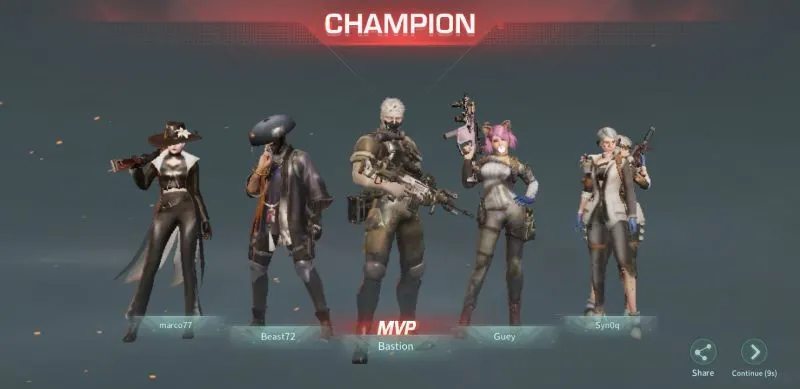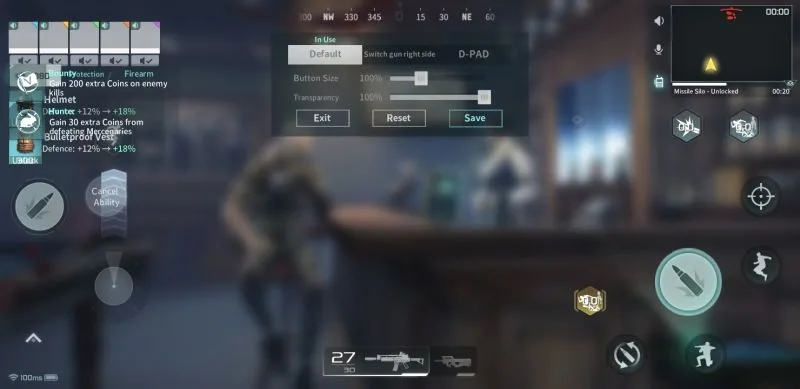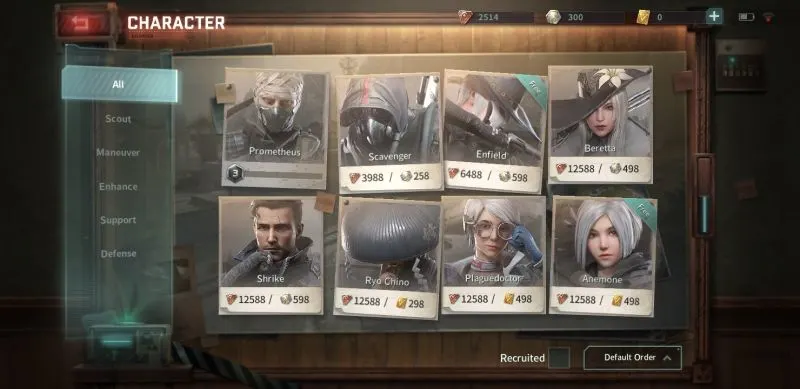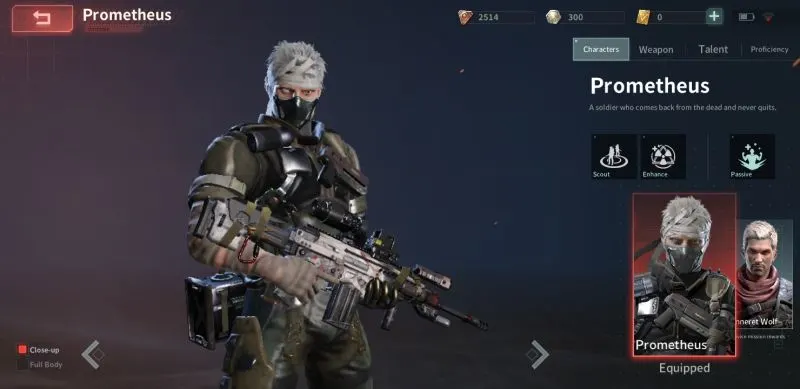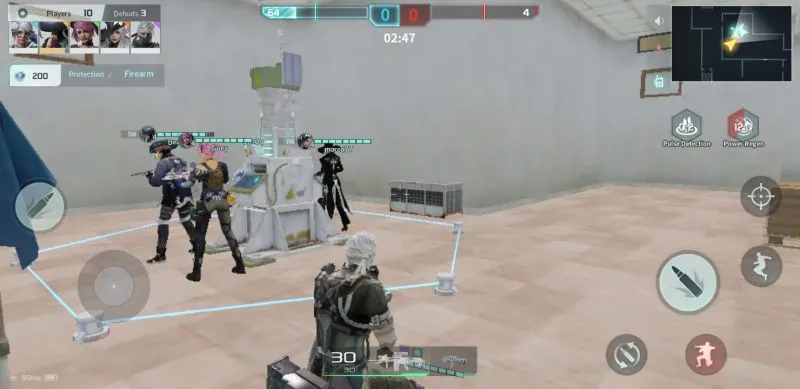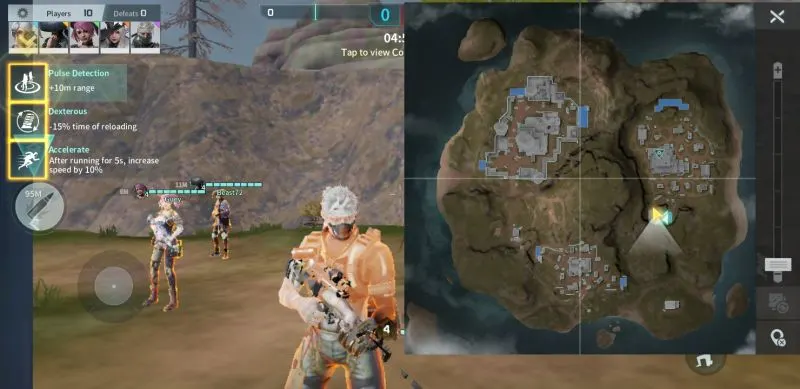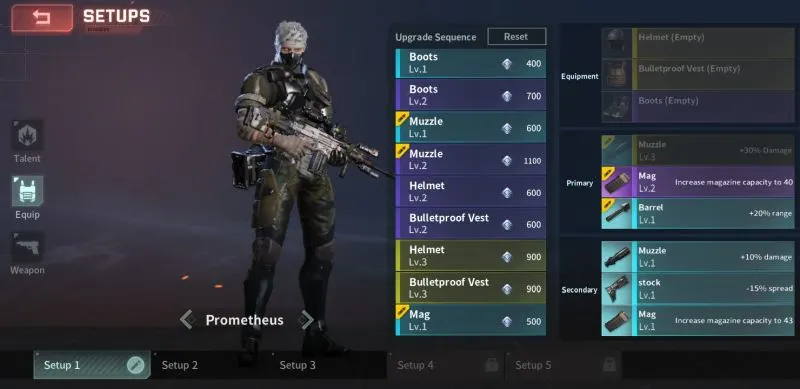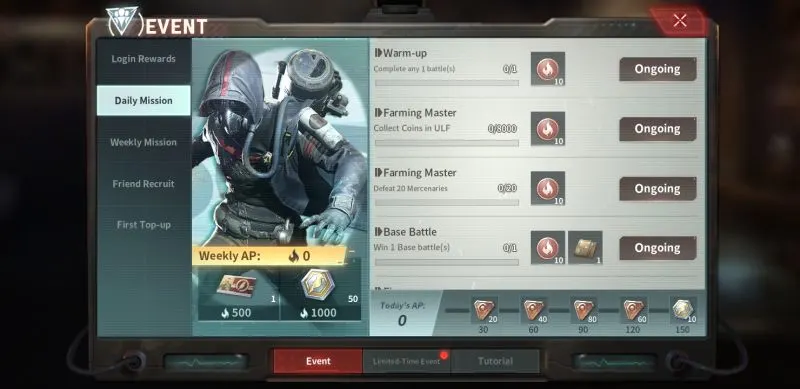NetEase Games remains to be a popular company within and outside the mobile gaming community. With 46 games under its prominent app portfolio, NetEase continues to develop and publish new games that almost instantly spell success considering its ever-increasing band of fans and followers. We have published extensive guides on several games from NetEase including Marvel Super War, Cyber Hunter, and Eclipse Isle. If you enjoy battle royale games and MMORPGs packed with action and adventure, then chances are that you have played a number of their most popular titles.
Disorder is NetEase’s latest action shooter title and is a third-person team shooter game set in a post-apocalyptic era. First launched on PC, team shooter aficionados on mobile can now enjoy the same thrills and highly strategic gameplay that Disorder provides on both Android and iOS platforms. Disorder features a variety of characters to choose from, each armed with unique skills, weapon loadouts, and play styles that cater to varying preferences of players.
As each character falls within specified class or classes as well, players can easily identify the roles they can take based on their choice of character. Packed with different game modes as well, Disorder is set to take the mobile team shooter genre by storm, so if you are raring to go for a unique, competitive, and distinguished team play combat, grab some friends and form the ultimate squad to test your mettle against other teams in Disorder.
Disorder certainly is the type of game that takes several matches, experience, and even days to master but only a couple of minutes to learn. As you start the game, you will be taken through a quick tutorial session where you learn all the basic controls. Mechanics are naturally given as every shooter game revolves around surviving and eliminating the opposition across every title. Controls are simple and intuitive but naturally takes time getting used to.
While all that is covered in the quick tutorial, the more challenging part lies with learning strategies, especially considering the wide variety of characters in the game that opens up countless possible team combinations to fight with and against in the arena. If you find yourself lagging behind as far as scores and ranks go, that is absolutely okay as it is all part of the learning process. If you want to learn some useful strategies to help you perform better in matches, and pave the road towards domination, then check out our Disorder beginner’s guide below!
1. Customize The Control Layout And Settings
Once you dive into Disorder, it will only take a few minutes to go through the tutorial session, which is basically focused on getting to know the controls above all else. It is a good time to familiarize yourself with the aim sensitivity as it is an important factor in every shooter game. After the tutorial session, you will can very much go straight into a match and get a first-hand application of all the things you have learned within the tutorial.
Before your next match, however, it is best to tinker with the game’s settings first, most particularly the control settings. In as much as every game developer aims to provide the best control layout and settings, it works and appeals very differently for each player. As such, being to personalize these aspects is always a welcomed treat for beginners and veterans alike.
You can tap on the gear icon at the upper right corner of the main screen to head into the settings page. There are numerous items you can customize as represented by their respective tabs and while it is best to check each of them out and tailor-fit applicable items to your preference, the most important portion lies within the control menu and sensitivity settings. There are intricate customization options available for the button layout, functionality and sensitivity of movements and so on, not just for aiming and firing but for driving as well.
If you are a beginner to shooter games, then it may take several tweaks, experiments, and test runs to get the most suitable configuration for you. Take as much time as you need to go through the process until you find the perfect setup. Keep in mind that the end goal hear is to be able to come up with a button layout that you can help you perform at your best in that you will easily be able to engage in matches without needing to look at each button before actually pressing them.
2. Get To Know Each Character
One of the factors that make Disorder such an exciting and challenging team shooter game comes from the host of characters it has along with the promise of bringing in additional ones through future updates. As each one possesses a variety of skills along with different starting weapon loadouts and proficiencies, looking into each one’s profile is important not just for purposes of choosing your hero or the hero you want to unlock and use later on.
Having a solid idea about what each one’s strengths and limitations are is necessary for you to more properly strategize with them as members of your team as well as against them if they are on the opposite side of the fence.
The character menu can be accessed from the main menu through the poster at the left side of the screen. Once you are at the character screen, you can see and read about all characters by tapping on their respective portraits and there are separate tabs that group them in their respective classes. With this, you should take into consideration the role you are most comfortable to take in a team fight and decide on your main character based on that consideration. Before you cast your decision, however, be sure to read through what each character can do.
To start off, each character in Disorder has 2 active skills and a passive skill. The active skills are want defines their class, making some characters belong to 2 distinct classes in the sense that each of their active skills are more suitable for different roles. There are 5 unique classes in the game and it is important for you to know what each one is good at to know how to use them and fight against them in matches.
The scout is your basic frontliner whose main task revolves around detecting enemy location and movement. Scouts do not necessarily have to engage the enemy first but they can depending on their loadout. As a scout, it is an important responsibility for you to communicate your findings and discoveries with the rest of your teammates.
The maneuver class exhibits various abilities that each relate to their class’ namesake and can have tactical advantage as far as getting close to enemies and backing away from them, if necessary, is concerned. These types of heroes can utilize their skills both for offensive and defensive purposes and while beginners can still use this class with some level of efficiency, it is more suitable for experienced and expert level players.
Enhance type characters have skills that boost their effectiveness in combat for a certain period of time. There are various enhance type abilities and each character belonging to this class typically has a unique enhance skill of their own. If this is among your preferred skills, timing the activation of your enhance skills is of utmost importance.
The support class offers offensive or defensive boost to nearby allies and will always be a welcomed addition to any squad. These units may not excel at wither offensive or defensive plays on their own but proper skill usage, along with close coordination with fellow squad members, can bring a tremendous advantage for the whole team.
Last, but not the least, are the defense types who specialize in protecting not just themselves but nearby allies as well. These units can charge into battle to block or guard against a bigger bulk of the enemies’ assault and tank allies behind them.
As most characters in Disorder have a combination of these types of skills, be sure to consider the appropriate roles and responsibilities each one comes with before you decide on which character to play as and invest more time on. Additionally, be sure to check out the initial loadouts of each character as well as the possible types of weapons they can unlock as they raise their proficiency levels.
Take note that gun types in Disorder are not restricted to the character’s class as each one has a unique loadout to begin with. As you raise a character’s proficiency level, it will unlock a few more options for secondary weapons but will still leave some gun types unavailable for that character.
Once you have a good enough idea of what each character can do, it should influence the way you choose your character in a match when paired with random players. Having everyone else pick first and leaving yourself to go for a character that will synergize the team the most is a great option, but of course, only when you are comfortable enough to play as other characters aside from your main.
On the reverse side, encountering an enemy in the arena with some level of familiarity about their character can likewise influence your decision on whether to engage or to flee. This depends on which character you are using as well as whether or not you are alone traversing the battle map.
3. Focus On A Main Character For Proficiency
There will naturally be few choices of characters to use at the early part of your game but as you play in matches and accomplish more missions, you will eventually earn enough credits and platinum to unlock other characters. For starters, at least one for each class can be chosen as a character so be sure to get to know each one well enough before you choose.
In addition to actually being more proficient on a character by using him or her more often, there are proficiency bonuses that you can unlock per level of proficiency in the character page. Raising a proficiency level will often earn you extra credits, but the more important rewards come in the form of skills enhancements and more weapon types to customize the character’s secondary weapon loadout.
While focusing on one character is naturally important in any competitive game, it cannot be helped that there will be situations where the team’s efficiency will be higher if you go with a different character. It may be due to the mix of classes you have on your squad or the simple lack of a particular one. Though it may be a while before you can have enough characters to choose from, focusing on a main character should not restrict you from playing as other characters you have unlocked, especially given the other bonuses you can get out of raising their proficiencies.
4. Stay Close To Your Team
It is often a very advantageous to have friends you can play with in games that rely heavily on team play like Disorder. Although there is always auto-paring with random players, teaming up with different squad members on each match leaves very little room for strategy and team growth. From choosing characters down to actually organizing yourselves once the match starts, it is a lot easier and more efficient if each squad member is familiar with each other squad member’s capabilities and proficiency level.
In any case, there will always be opportunities in the game to add and make more friends as you play and regardless of whether or not you are playing with people you are familiar with, some basic strategies apply for most scenarios, especially if you are a beginner.
One quick way to learn the ropes as a beginner is to keep close to some, or at least one, squad member. There will always be the possibility that the squad member you are close with is as new to Disorder as you are but then, again, if you are not yet that confident about your skills, then being around your squad works for you in every way.
Keeping yourself in close proximity with your teammates will work both ways as you can support your ally as much as he or she can support you and that comes regardless of the character or class you choose. While some characters are best suitable to stay ahead of the pack, you should opt to go for mid or back line if you are just starting out. Engaging enemies will likewise be easier with your teammates than on your own and if you are behind an ally, you should have a little more time to decide on whether to push with engaging the enemy or turning tail until reinforcements arrive.
Being close enough to your squad also provides a lot of opportunities for you to learn from other players. Whether your teammates perform well or not in a firefight, everything you see should help you realize the strategies that work and those that do not. Keep in mind, though, that staying close to your squad does not always mean being within an arm’s reach to them as being close enough to see them and get closer when needed is sufficient enough in a lot of scenarios.
There are certain objectives within some matches that pushes you and your squad to stay in a particular spot. It is practically a given that you should keep together as these spots often have several sides open and hardly any cover making it a challenge for your team to be able to stay put long. In these scenarios, it is very important to be well-coordinated especially in terms of guarding open areas and being constantly ready to defend your squad.
Positioning of squad members is important as well and keeping more defensive characters up front and those with support skills on the ready should always be observed. This can be very challenging for a randomly paired squad but not impossible.
5. Familiarize Yourself With The Map Layout
Beyond knowing what each character can do in disorder, having a strategic approach towards every match requires a good enough sense of familiarity with the lay of the land. There are currently not a lot of options for battle arenas in Disorder but the map is huge and full of details. Considering as well that players can climb walls adds to the various areas of the map to pay attention to.
Like in MOBAs and battle royale games, scouring the map for critical locations is an important feat that you need to be familiar with as soon as possible. Given as well that the initial matches you will engage in are to be considered part of the learning sessions, be especially conscious of each area you visit and take note of potential camping and ambush points. This, of course goes in addition with resource spots you need to be mostly familiar with along with the perils that come with each one.
6. Check Your Setup Before Engaging In A Match
Once you reach rank 4, you will be able to unlock the setup feature. Be sure to spend some time to tinker with each available option within it as doing so can tremendously impact your performance in the succeeding matches. While there are recommended configurations for each one, which is great for beginners actually, feel free to modify it to your preference once you have a good understanding of how each choice works.
You can adjust talents, equipment upgrade and purchase sequences, as well as weapon loadouts in the setups and do take note that what is best for one character is most likely different from the rest, which is why it should be done on each character you intend to use.
Be sure to consider the role you want to play and keep your character’s skills in mind as you customize the setup. As most characters do sport a combination of skills that fall within different class categories, some setup changes are bound to be in favor of one role over another. While there are no perfect setups that equally apply to each player given personal preferences, every change or adjustment you make should be based on an intent to improve your performance be it to excel in one-on-one engagements or team skirmishes.
7. Accomplish Missions For Extra Rewards
Beyond the immediate rewards you obtain after each match, as well as the gifts from the developers you receive via your mail, there are tons more that you can claim via the events banner that you can access through the TV at the upper part of the main screen. On top of the daily login bonuses, there are daily and weekly missions you can accomplish for currencies as well as other items that can further boost your progress.
Do note that there are no difficult tasks to beat even for total beginners and all it takes to claim the top rewards is actively playing. Daily and weekly missions all relate to the usual activities you engage in as you play the game. Chances are that you will accomplish a lot of these feats without even knowing about each objective. As a beginner, however, be sure to visit the event banner so that you can take note of each objective and make it even easier for you to reach each objective with each subsequent match you participate in.
Relative to rewards and freebies, be sure to visit the store just behind the bar as there is a free chest for you to claim each day. The brochure stand just on top of the bar also provides some free stuff every once in a while so make it a habit to click on it even when there are no indicators to know when the next reward can be claimed.
Disorder certainly holds a lot more secrets and details waiting to be discovered but for now, this is where our Disorder beginner’s guide ends. In addition to the simple tips and strategies we mentioned above, know that Disorder is a type of game where repetition, dedication, and patience are all contributory to speeding up your progress as well as reaching higher ranks. If you love and enjoy playing Disorder, be ready to spend some time engaging in matches and do not be disheartened when losing a match as that can happen even to veteran players and squads.

